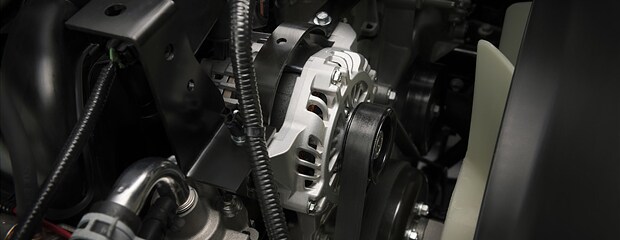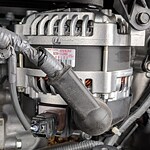
 Automotive alternators seldom take center stage, but they should. They're just as important as a vehicle's engine and battery. All three components work closely to keep vehicles powered and moving smoothly. We wondered how alternators work, so we asked the seasoned techs on our Bloomington, IN Volvo Cars of Bloomington service department team. Here's their answer.
Automotive alternators seldom take center stage, but they should. They're just as important as a vehicle's engine and battery. All three components work closely to keep vehicles powered and moving smoothly. We wondered how alternators work, so we asked the seasoned techs on our Bloomington, IN Volvo Cars of Bloomington service department team. Here's their answer.
The alternator uses mechanical energy to generate electricity that powers and recharges many other vehicle components, such as the battery, headlights, radio, and power steering. After the battery gives the engine an initial jolt to help it start, the alternator takes over, continuously powering a vehicle even when the vehicle idles at a stoplight.
How the Alternator WorksThe alternator contains a rotor, a rotating magnetic body. The rotor sits inside a stator, stationary housing consisting of wire coils spaced at even intervals of 120 degrees. Connected to the engine crankshaft via the serpentine belt, the rotor spins inside the stator, generating alternating (AC) when the magnet passes over the wire coils. The alternator's rectifier changes AC into direct current (DC), the type of current that powers automotive electrical parts.